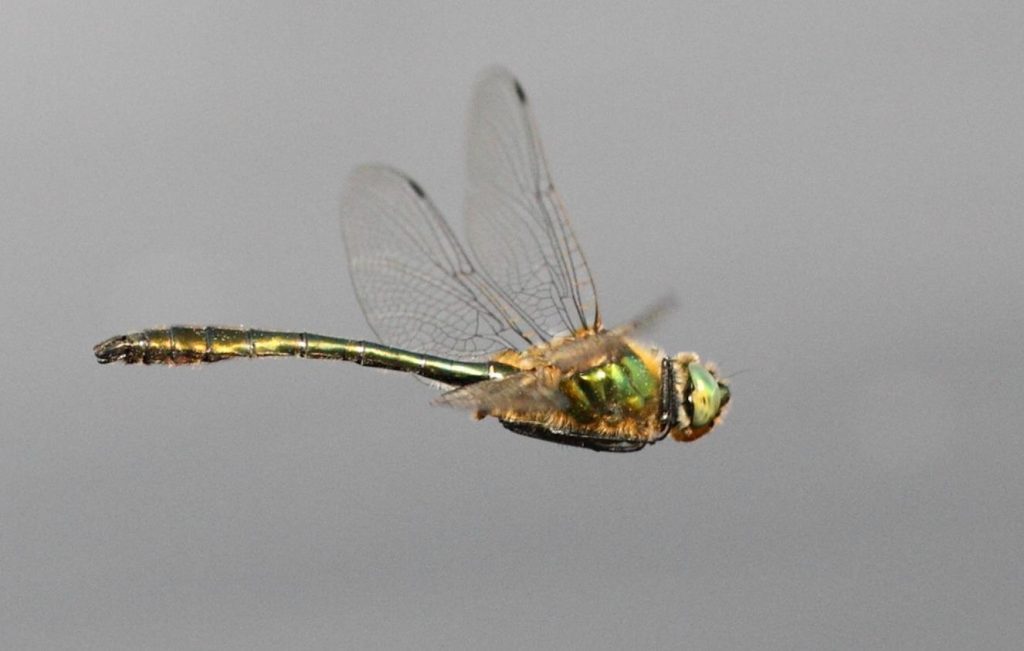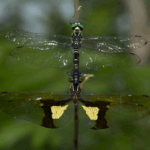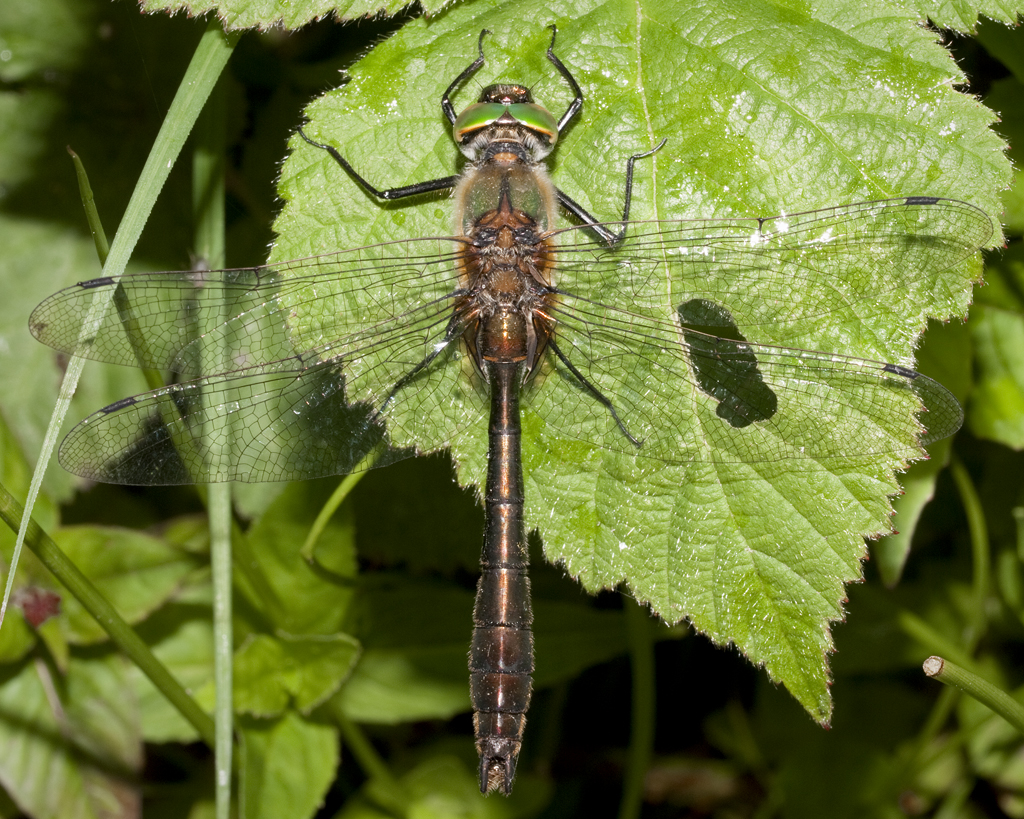
This dazzling dragonfly can be seen darting above tree-lined ponds in certain parts of Britain.
Statistics
Length: 4.8cm
Conservation status
Scarce and local
When to see
April to August (mainly May to July)
The downy emerald is one of three species of emerald dragonfly found in the UK. Although they all have a very limited distribution, the downy emerald is the most widespread, found in scattered locations from southern England to the highlands of Scotland. Downy emeralds are usually encountered around ponds and lakes close to woodland, with some overhanging trees. Their peak flight season is between May and July, and they will take to the wing in cooler, windier conditions than many other dragonflies.
Hairy green-copper dragonfly and bright apple green eyes.
Males: Thin waist and club-shaped abdomen.
Females: Thicker abdomen.
Males patrol the edges of their chosen waterbody, flying fast and low as they search for females. They rarely settle on perches, but often hover for a short while. They’re highly territorial and will regularly clash with other dragonflies that come too close, attacking different species as well as other downy emeralds. After patrolling for a while, they dart off into the trees to feed, returning to the water later on to patrol again.
After mating, females lay their eggs in areas of shallow water with a few submerged plants. They hover above the surface, dipping the end of their body into the water to wash off eggs. Once they’ve hatched, the spider-like larvae live amongst the fallen leaves at the bottom of the pond. They’re ferocious hunters that prey on other aquatic creatures like midge larvae, doing most of their hunting at night. It can take two or three years for them to develop and be ready to emerge as dragonflies.
How to identify
A medium-sized, metallic greenish-bronze dragonfly with bright, apple-green eyes. The thorax (the body section behind the head) is covered in dense orange hairs. Males have a thin waist bulging into a club-shaped abdomen, whilst females have a more uniformly chunky abdomen.
The two other emerald species look very similar, but aren’t as hairy as the downy emerald and have more yellow on their face.
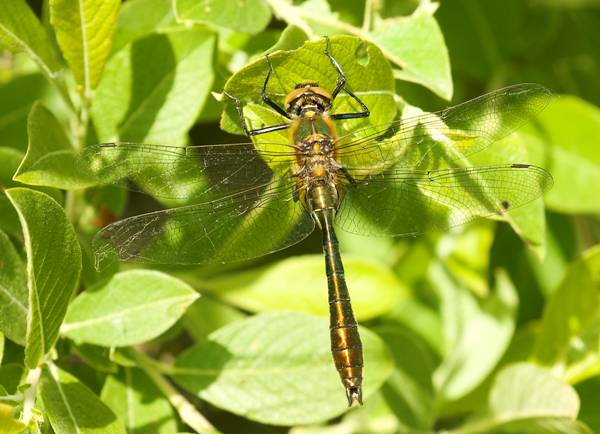
The downy emerald (Cordulia aenea) is a species of dragonfly. It is metallic green and bronze in color, and its thorax is coated with fine hairs, hence its name. Like most other emeralds, the downy emerald has bright shiny green eyes. Adults are around 5 cm in length, and are in flight from May through July each year.
This species lives in woodlands near lakes and ponds; like other dragonflies, it lays eggs in water and its larvae are aquatic. It is distributed throughout most of Europe. Although it has been eliminated from some of its historic native area in Great Britain due to habitat loss, dense populations of the downy emerald can still be found there in spots where its ideal habitat remains.

After the downy emerald young emerge from their eggs, they live for three years at various larval and nymphal stages. They are fully grown adults for only two months, during which this time they mate and the females deposit their eggs back into the water. Female individuals of the Cordulia aenea (C. aenea) species have panoistic ovaries that produce female sex cells, or oocytes. The nucleus of the panoistic oocyte likely contains all the necessary genetic material to develop the oocyte on its own, form the C. aenea egg yolk, and develop the C. aenea embryo.
The Downy Emerald Dragonfly (a male is pictured above) is one of three similar species that are still found in Britain, the other two being Somatochlora metallica, the Brilliant Emerald, and Somatochlora arctica, the Northern Emerald.
Description
When mature, this dragonfly is readily distinguished by its bright green eyes, very downy green thorax and dark greenish-bronze abdomen. The male and female are similar in appearance and colouring, but the female has a fatter abdomen while the male has a slightly waisted and club-shaped abdomen. Typical wingspan is 6.8cm and the overall length about 4.8cm.
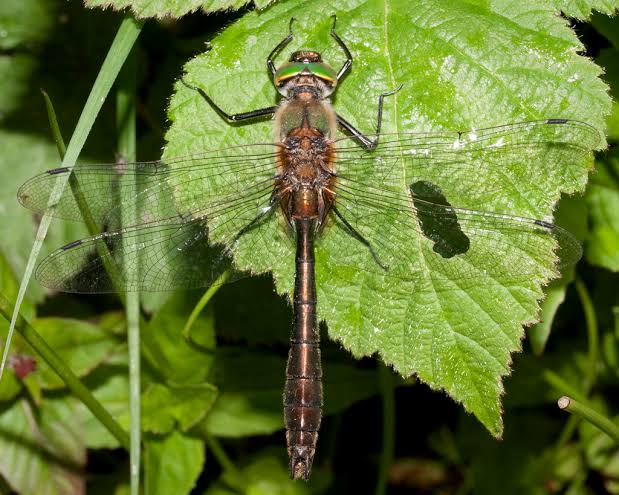
Distribution
he Downy Emerald occurs in scattered populations throughout England, Scotland and Wales, but only in the southeast of England is it at all common. There it is still able to find plenty of the kind of habitat it needs: stillwater with mature deciduous trees nearby. On the mainland of Europe the Downy Emerald occurs in all central and most northern countries, its range extending from western France across into Asia, although in southern European countries the Downy Emerald is restricted to the cooler mountainous areas.
Habitat
This fast-flying dragonfly favours canals, ponds and lakes with emergent vegetation.
Life Cycle
In Britain this dragonfly can be seen on the wing from late April or early May until the end of July and sometimes as late as mid August. The males patrol along waterside margins until they find and seize a female with which to mate, and then the females deposit their eggs onto the surface of the water in weedy margins.
After emerging from their eggs, the larvae or nymphs (sometimes referred to as naiads) of the Downy Emerald live in the water for three years before emerging on plant stems; there they shed their final nymphal skin or shuck (called an exuvia), dry their wings and then take flight. Winged adults feed on smaller insects and can live for about up to two months.

